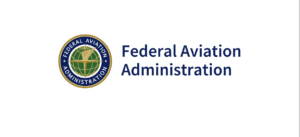ETL Aviation Purchases Schweizer 300CB helicopter
ETL Aviation purchased a Schweizer 300CB helicopter to use for flight training. The Schweizer is an excellent platform for helicopter training. The 300CB model helicopter was originated from the the Hughes TH-55. The TH-55 was used as the primary training helicopter for the Army from 1969-1988.
Learn more about the Schweizer 300CB Helicopter.
“We really like the safety of the Schweizer 300 platform, and how easy it is to teach new students. We use the 300CB for all of our helicopter flight training program at ETL,” said owner and primary flight instructor Brad Fenster.
The Schweizer helicopters are known by a few different names. The manufacturer’s marketing name is the 300C, 300CB, and 300CBi. The FAA presently refers to the helicopter series as the 269C, and 269C-1. Older models are the 269, 269A and 269B. For around ten years, the type certificate for the 300 series helicopters were owned by Sikorsky (2008-2018). During this time, the 300 series was referred to as the S300. The original design of the helicopter was from the Hughes Tool Company (yes Howard Hughes, maker of the Sprouse Goose and other aviation accomplishments) and was designated the TH-55. This design was used by the U.S. Army to train thousands of Army helicopter pilots for approximately 20 years (1968-1988) until the Army switched to turbine helicopters for primary training.
The Schweizer 300 CB Rotor System
The Schweizer 300CB helicopter is three-bladed, fully articulating rotor system. Having a fully articulated rotor system removes the risk from mast bumping and other low-g concerns. For its category, the rotor system is considered high-inertia. The high-inertia rotor system makes auto rotations very forgoing for the new student. With this rotor system there is no SFAR mandating specific pilot training requirements, unlike the Robinson Helicopter.
The Schweizer 300CB Power Plant
The Schweizer 300CB helicopter is powered by a carbureted, Lycoming HO-360 engine. The engine provides 180 continuous horsepower at 2700 RPMs. A correlator provides some throttle management, but the pilot is required to fine tune the power demands. As a new pilot, this requirement helps ensure the pilot understands the power demands of the rotor system and sets a basis for their flight career. Future helicopters the pilot flies will likely have a governor, but the underling power demands will be understood.
The Schweizer 300CB Flight Controls
The flight controls are primarily direct linage. There are no hydraulics. As such, the pilot will become accustomed to feeling the aerodynamic forces impacting the helicopter. Although not comparable in power, the 300 (269) series helicopter will have a similar feel to its big cousin the MD500 or 369 series helicopter.
Downsides to the Schweizer 300CB helicopter
Although a safe, reliable, and easy-to-fly helicopter, the Schweizer 300CB has some downsides. The primary downside is the helicopter is more expensive to operate than the more common Robinson R22. Although the larger size of the Schweizer when compared to the R22 is nice for the student, it does make the 300 series helicopter harder to hangar. The 300CB takes up more hangar space, and ultimately costs more to hangar, which brings up the overall operating cost. The Schweizer helicopter has a fairly slow cruising speed. This slow cruising spend is not a problem for training, as who cares how far you are flying for a 2 hour cross country flight. But this slow cruising speed does limit the use of the helicopter for personal flights, such as taking it on various, etc.
Overall, we feel the safety, reliability, and easy-to-fly characteristic of the Schweizer 300 for training, far out way any downsides.
Learn more about the specifications of our Schweizer 300CB helicopter here.
Other Posts

IFR Study Guide
The IFR Study Guide is a primary resource for airplane and helicopter pilots to prepare for their instrument checkride. The IFR Study Guide was written by ETL Aviation’s Chief Instructor, Brad Fenster.

FAA Legal Interpretation on Instrument training for Commercial Helicopter Rating
FAA issues legal interpretation that clarifies that instrument training for commercial rating must be completed in a helicopter or helicopter simulator.
This legal interpretation clarifies that if the training occurs in a helicopter, or with a device or simulator that replicates a helicopter, that training may count towards the five hours of instrument aeronautical experience required under 14 CFR 61.129(c)(3)(i). However, instrument training performed outside of a helicopter and without a flight simulator, flight training device, or aviation training device that replicates a helicopter cannot count towards the five hours of instrument aeronautical experience that is required under 14 CFR 61.129(c)(3)(i).

